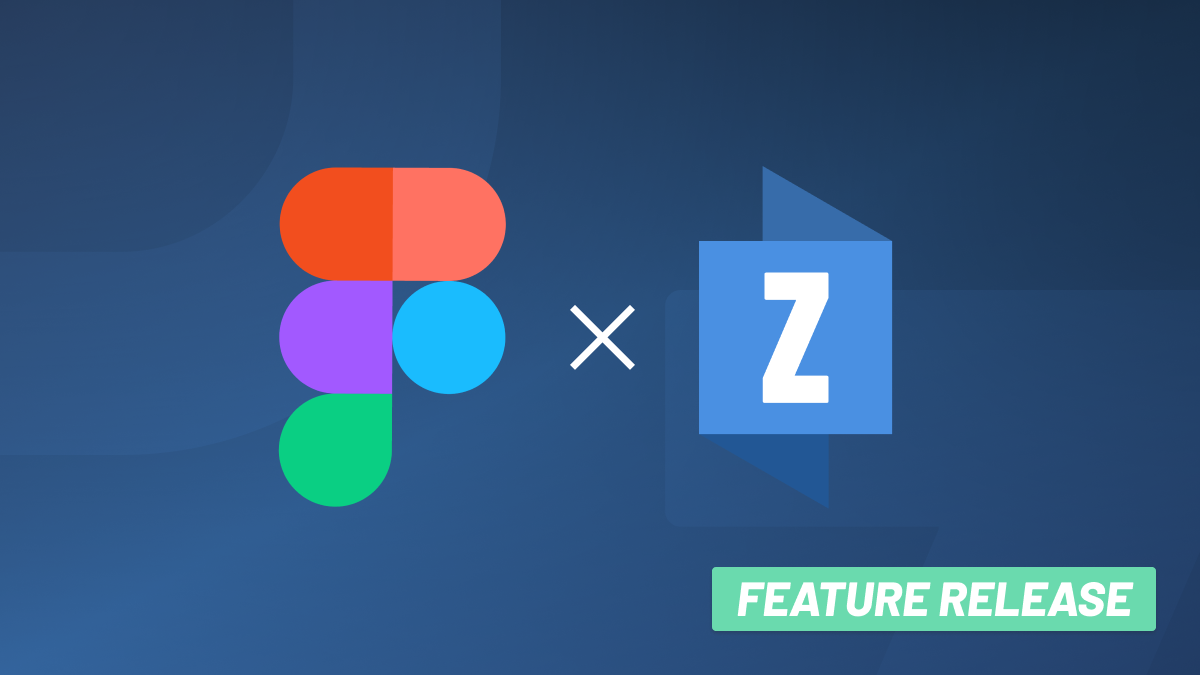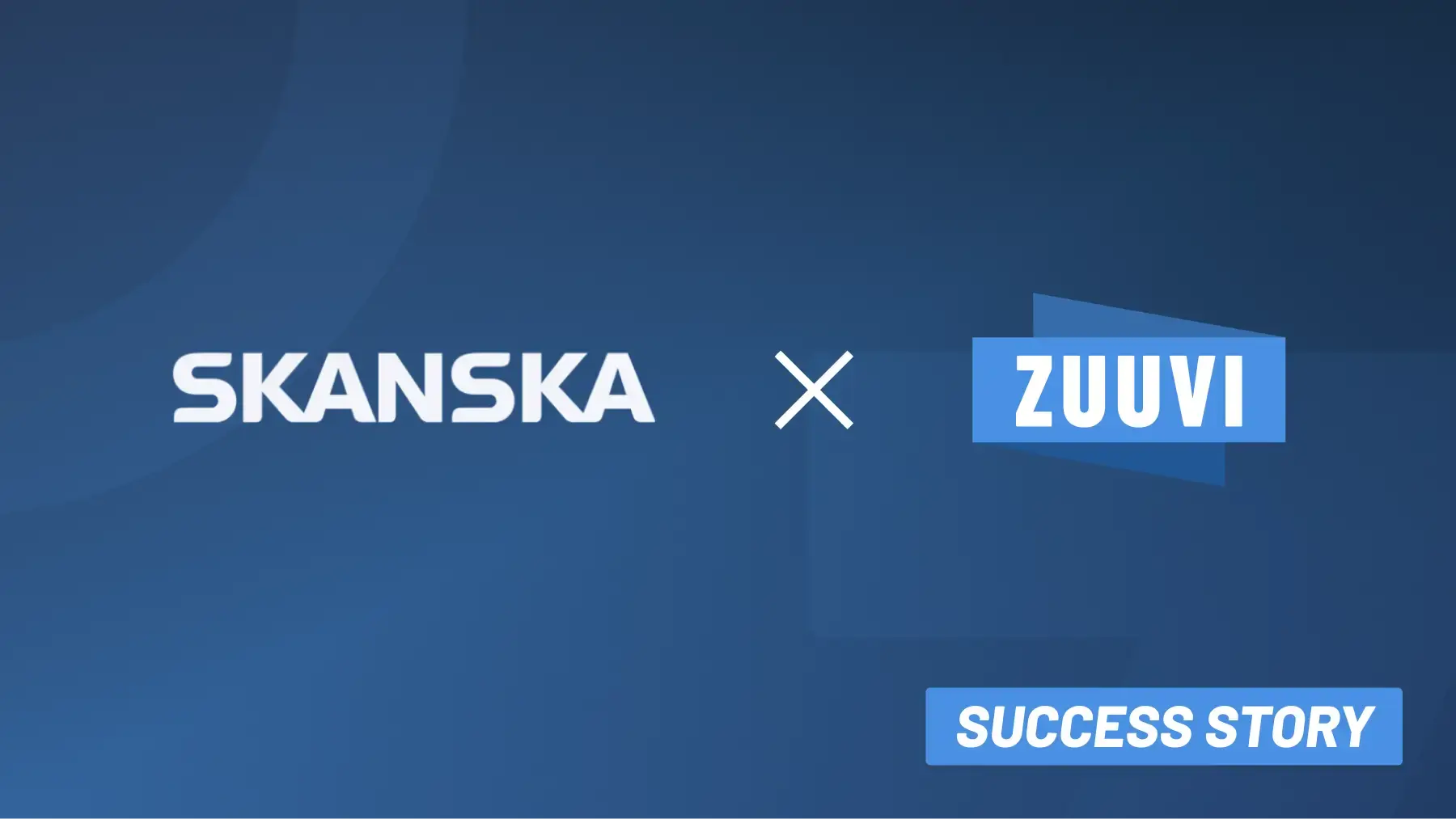Best Performing Ads: Data from Display Ads
... While CTR can be indicative of how your ads perform, many other metrics play a large role - CPM, conversion rate, CPC, CPA, view-ability, and much, much more.
Keep this in mind when assessing your ads' performance!
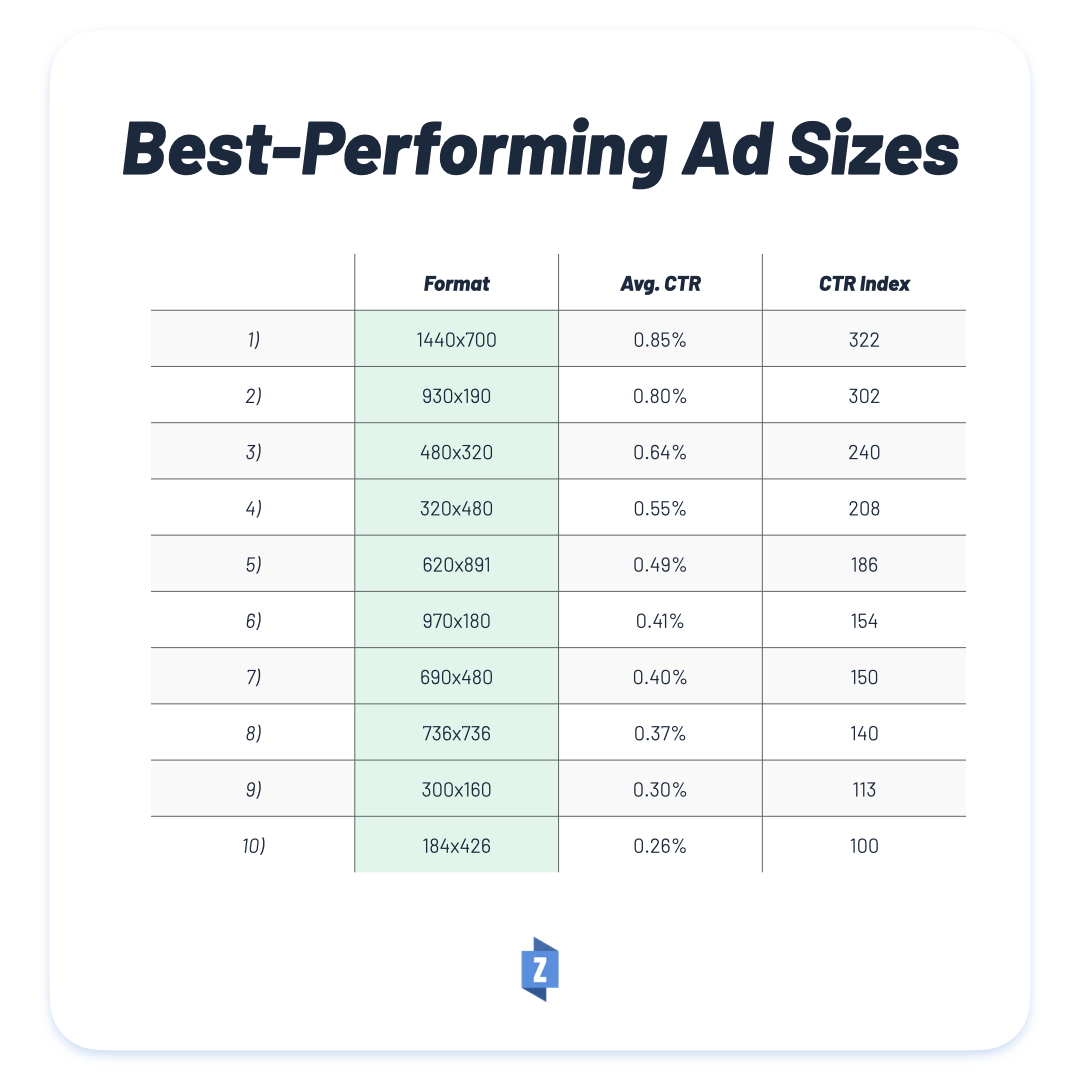
Display Ad Sizes: High Impact Ads on the Rise
Interestingly, 4 out of the 10 top-performing ad sizes are high-impact formats. This tells us one thing: these formats are outperforming others significantly. If you haven't already started using high-impact formats, now's the time to get creative and tap into their potential, as they are among the best performing ads at the moment.
Take the 930x600 format as an example: once a top performer in 2022, it has now seen a decline in usage due to the rise of high-impact ad formats like the 1440x700 format, which offers more space for dynamic ad content.
Creators are gravitating toward these larger formats that offer more creative freedom and better audience engagement. It’s a fascinating shift, showing how quickly trends change when creators seek to create the best performing ads to achieve most possible audience attention.
Read more about that below 👇
Why High-Impact Ad Formats Work
Among the best performing display ads we find high impact ads. These formats typically allow for more creative ad elements and are less prone to banner blindness. This is a key reason why high-impact formats such as the 1440x700 and 930x190 ad formats remain top choices for advertisers. These formats offer greater click-through rates (CTR) and engagement due to their larger size and flexibility for different ad components and creative ideas.
Looking Ahead: Display Ad Trends
In 2024, we expect to see more advertisers embrace dynamic ad formats with higher CTRs. To stay competitive, consider shifting to high-impact HTML5 banners and incorporating interactive elements like video display ads.
Looking for more information on how display ads boost your overall marketing performance?
Let us take you through ways to stand out in the digital landscape using display ads.
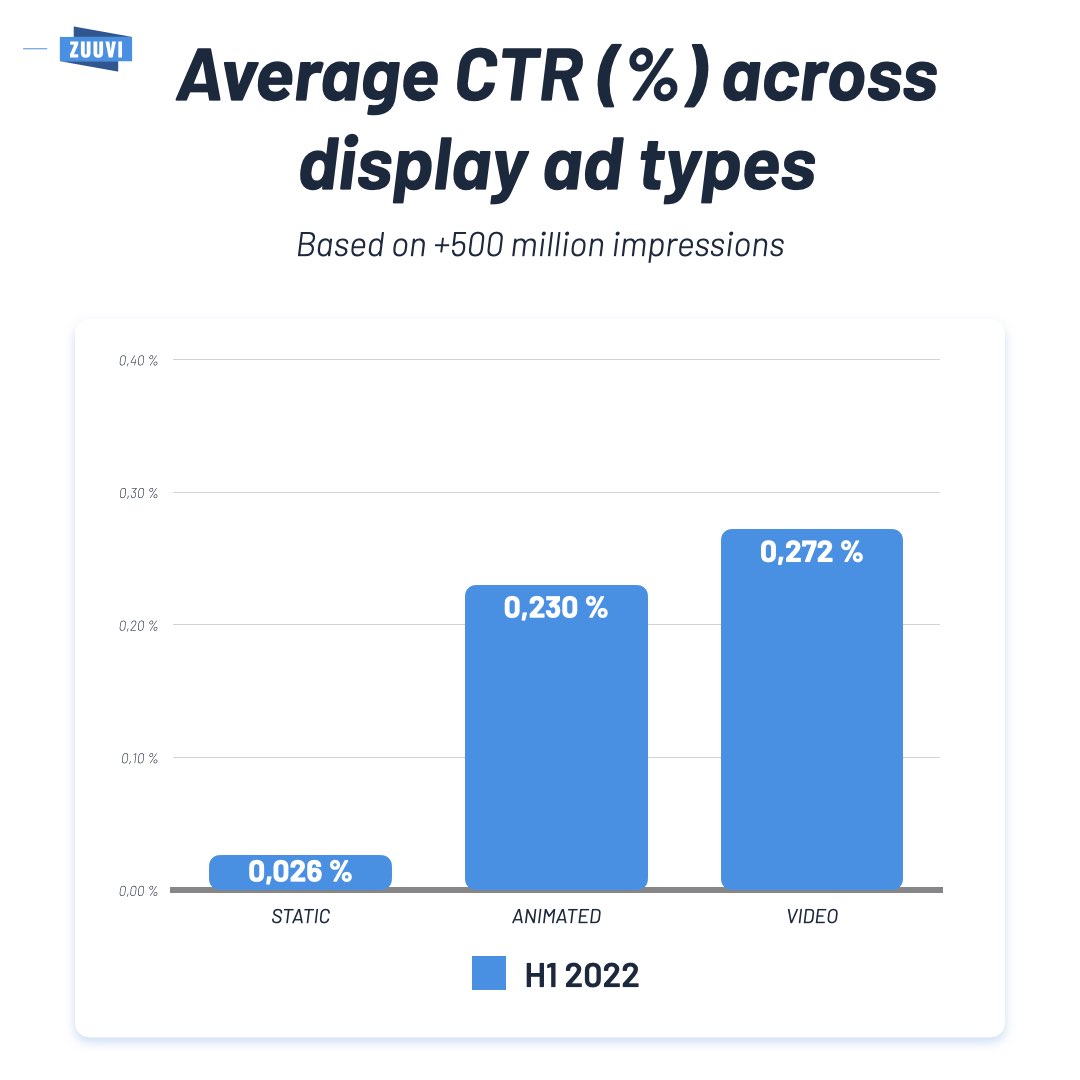
Average CTR for Display Ads
The average CTR is going steadily upwards from what you add to your HTML5 display banner. See the difference between static, animated, and video banners here:
Static display ads: 0,026%
Animated display ads: 0,230%
Display ads with video: 0,272%
These figures highlight the importance of dynamic content in HTML5 banners. By integrating animations or videos, you can increase engagement significantly.
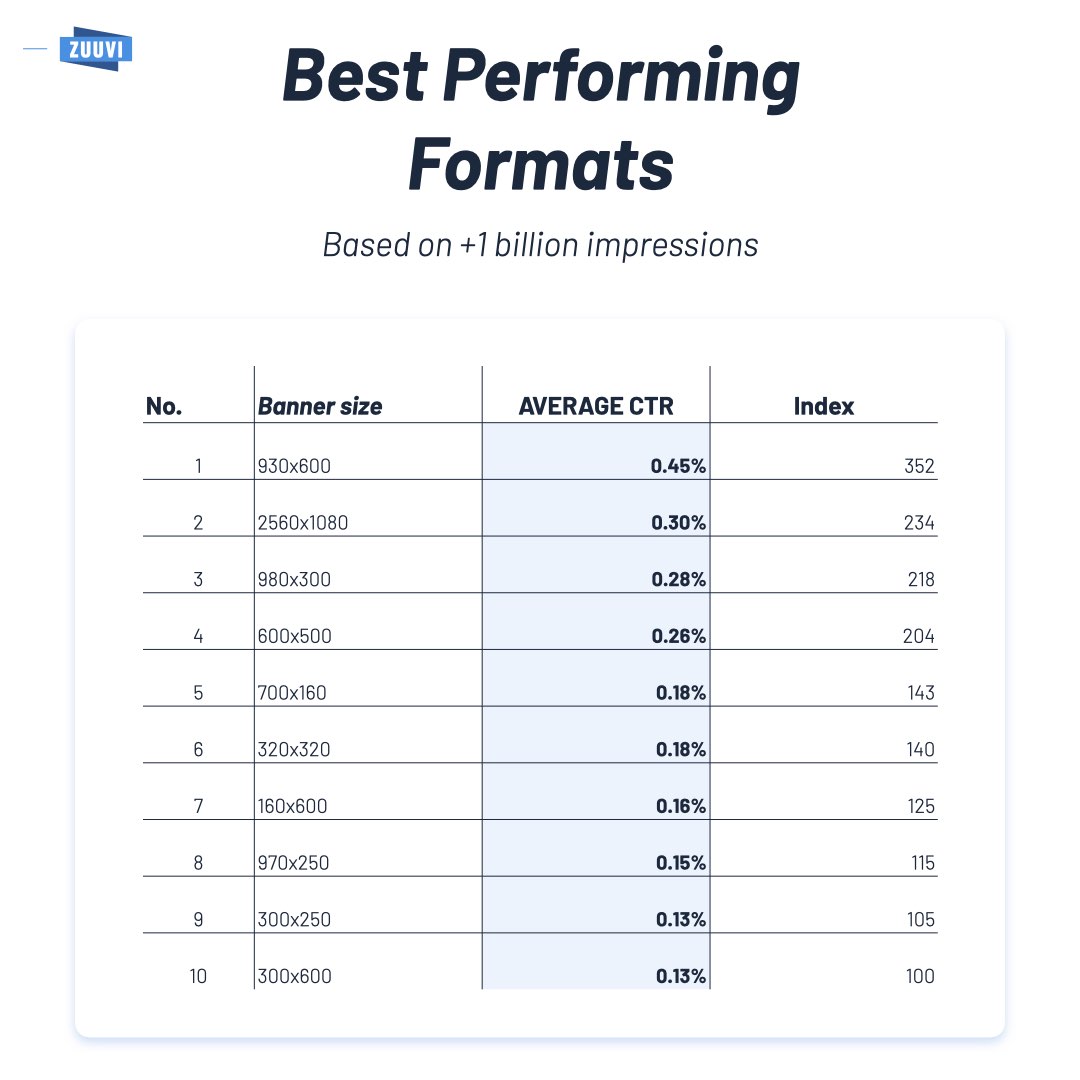
930x600 significantly better than the next best format.
Christopher Munk, who is a Data Activation Consultant at the agency Publicis Media, gives his explanation for the figures. He finds it particularly interesting that the 930x600 format performs better than the high impact format 2560x1080.
"As the largest of the standard formats, the 930x600 banner often has an average high viewability, as it makes the user stop and look at the banner. It is also not as exposed to "lazy load". Nor banner blindness, as the sticky formats 160x600 and 300x600 are", says Christopher Munk.
"I think it is the combination that makes the 930x600 banner have such a significantly higher click rate than the other formats", he says.
Empirical Data
We want to create transparency in the market of display ads.
Everyone knows HTML5 banner ads on media websites, blogs, etc. - and truth be told, a lot also find them annoying. That's why we believe in Empowering Creativity. We want digital advertisers to take the next in their digital ad production. Because why should display ads be boring?
That's why we want to give you the hard facts on the display market.
Data
This page is updated twice a year.
This data is based on more than 500 million impressions (so far).
Industries
Retail, e-commerce, finance/banking, and professional services within software, IT and consulting
Geography
- Primary countries: Denmark, Sweden, Norway, Finland, Holland, UK & USA
- Secondary regions: Rest of Europe.
Ad Networks
Adform, Google Marketing Platform, Delta Projects, AdTech, Xandr, BidTheatre. - Adform and Google Marketing Platform represent around 95 percent of the data, as is typical in the Nordics.

